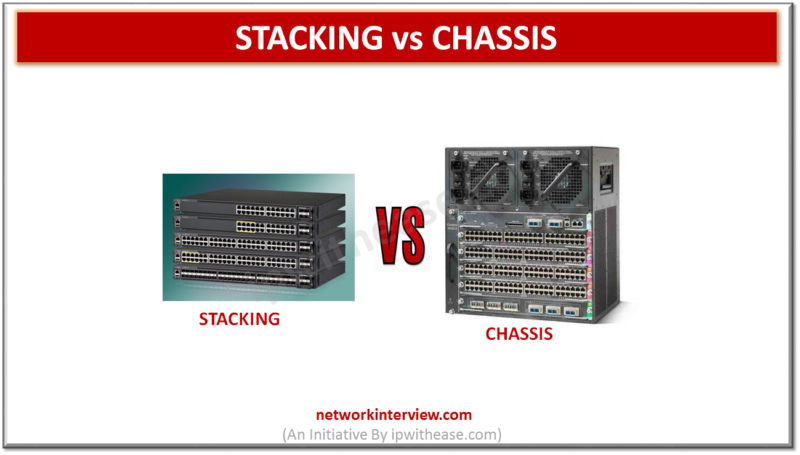
Stacking vs Chassis: Know the diffrence
Comparison Table: Stacking vs Chassis
Below table describes the difference between Stacking and Chassis:
PARAMETER | STACKING | CHASSIS |
| Cost | Less Expensive | More Expensive |
| Ease of Redeployment | Easier to resize or redeploy | Not easy to resize or redeploy |
| Placement | Preferably at Access layer | Preferably at Core and Distribution Layer |
| Cabling for Redundant power supply | 1 PSU per switch is required, hence more power cabling. | Only 1 set of redundant PSU per chassis required, hence less power cabling |
| MTBF (Mean Time Between Failure) | Usually lesser than Chassis | Usually higher than Stack Switches |
| Failure Rate | Greater failure considering at least as many power supplies at stack members. E.g. – Stack of 6 switches means 6 power supplies to manage hence greater chance of failure. | Lesser power supplies(generally 2) means less chance of power supply failure. |
| Additional Components | Stacking does not support integration of additional services components like Firewall Service Module, Intrusion Detection. | Supports integration with services components like FWSM module, Intrusion Detection etc. |
| Physical Space | Less Space consuming | Twice the space of stacks |
| Pay as you grow model | Supports appropriately | May or mat not apply |
| Management and Upgrade | Mixing switch models, firmware and software getting all of these variables to match can be quite the task. Adding or removing switches in a large stack can be problematic. | Ease of management and upgrade |
| Performance | Low on performance | High on performance |
| Interface Selection | Lesser choice of Interface selection | More choice of Interface selection |
| Dedicated modules for Data, Control and Management Plane | Yes | No |
| Source: ipwithease.com | ||
Continue Reading:
Tag:comparison



